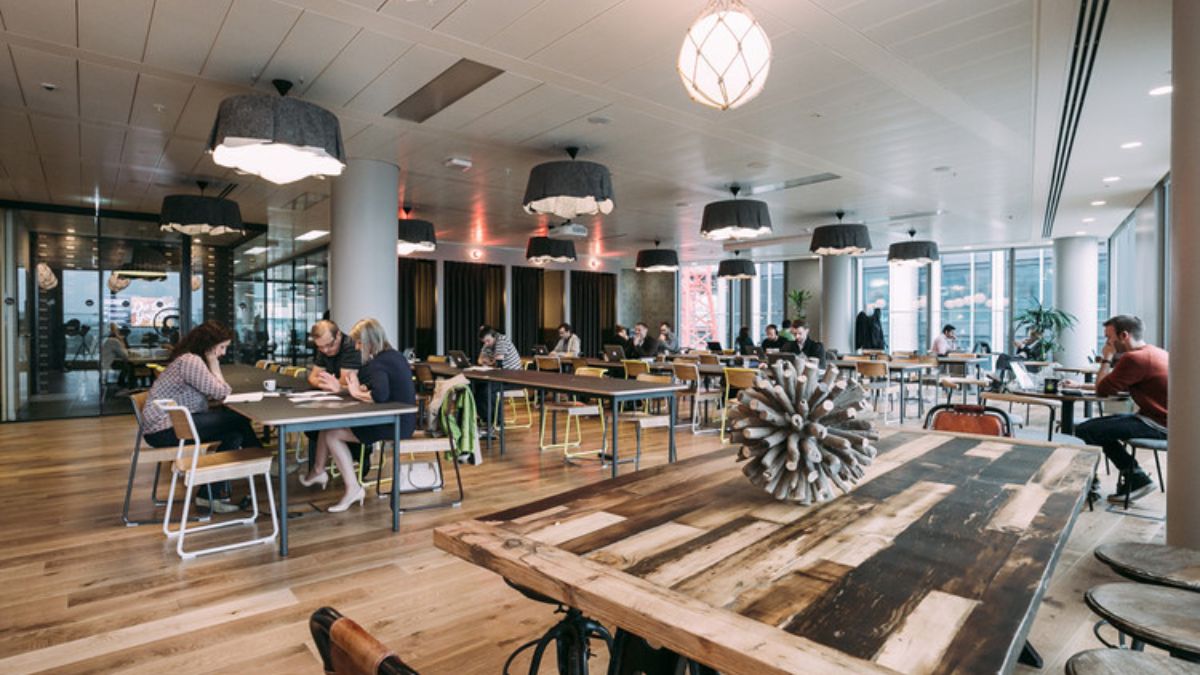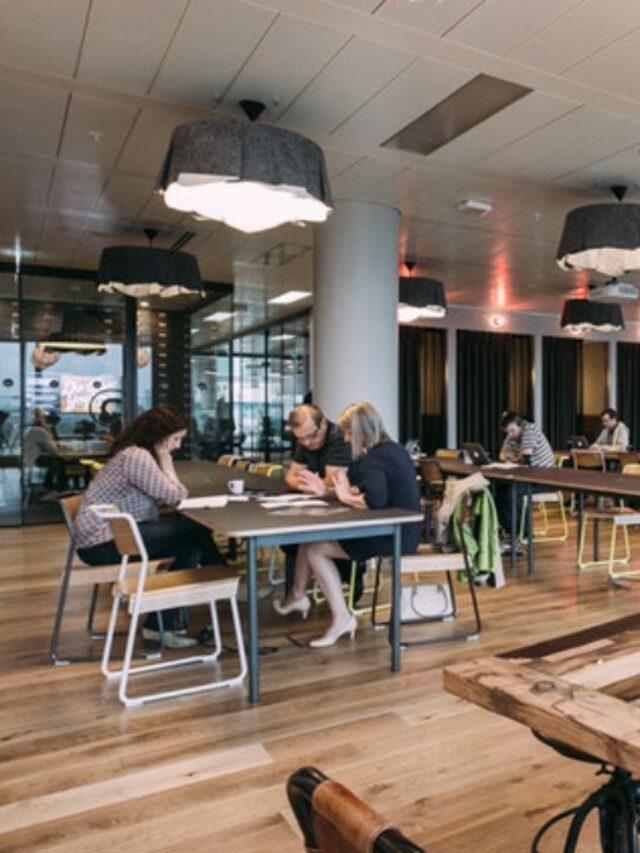There are a myriad of ways to design a workspace. But no matter what, the design must cater to the modern working norms of the people. And that is why the concept of flexible workspaces is now accommodated in almost all contemporary offices.
But what is a flexible workspace to begin with?
Simply put, a flexible workspace or office space is designed to support employees with dynamic needs. Unlike traditional offices with fixed desk positions, workers in a flexible workspace can choose the area of the office that suits them the most and allows them to maximize their outputs and carry out their work without inhibiting their productivity.
Such work arrangements also allow employees to switch up where they work, not working the conventional 9-to-5 office hours and working remotely or elsewhere.
Currently, the estimated value of flexible workspaces globally is $26 billion, and this is just the beginning; flexible workspaces have so much more to offer and are thus becoming the norm as the classical cubicle and desk layout fades out. And in this blog, let’s further explore how flexibility and the concept of a flexible workspace are crucial to meeting the demands of today’s workforce.
The Benefits of Flexible Workspaces
1. Flexibility and Agility
With flexible workspaces, businesses possess the agility to respond quickly and effectively to any changes in the market or business requirements.
This also allows businesses to scale up or down without worrying about the financial and logistical aspects of moving to new office space and diversifying at their own pace.
2. Cost-effectiveness
It goes without saying that renting out office spaces, even for a few remotely working employees, requires a significant financial investment, and add on the other overhead costs for various other requirements such as utilities, maintenance, office furnishings, and other equipment, and the resultant sum could be a financial burden for some businesses.
But with flexible workspace solutions, employers and businesses can save a significant amount on office space costs since most of these office spaces offer a range of pricing options and are already equipped with basic necessities like conference rooms, office furniture, and a telecommunications network.
3. Networking Opportunities
Flexible workspaces help harbor a community of employees and employers from various industries and backgrounds. This diverse community offers an opportunity to mingle with people and professionals one might never have had the chance to meet otherwise.
4. Collaboration and Productivity
Flexible shared workspaces provide new and different environments that promote innovation and inspire employee creativity.
This is extremely relevant to coworking spaces, which bring together people and businesses from different backgrounds and industries. This creates diversity, encouraging new ideas and approaches from varied perspectives. And this helps employees enjoy their time in the office, which directly affects their productivity and the final results of their tasks.
5. Improved Work-life Balance
Providing flexibility in terms of choosing when and where one works helps them better balance their personal and professional lives.
And when employees are provided with the flexibility of choosing their schedule and/or work locations, they experience an improved work-life balance, which helps increase productivity and satisfaction while reducing the risks of work-related burnout and stress.
Also Read: Advantages of a Virtual Workspace
The Future of Flexible Workspaces
1. Remote and Hybrid Work
In the context of a hybrid work environment, flexible coworking spaces would offer a collaborative working space that would help them thrive, and for remote workers, these coworking spaces would provide fully equipped and functional spaces to work since a home office might not be considered a long-term solution for working remotely comfortably.
2. Technological Advancements
Workplace apps, improved video conferencing, and other digital tools that help a team collaborate better online are helping facilitate the rise of flexible, remote, and hybrid working.
Advanced technologies like smart sensors can help organizations understand the flow of faculty and better plan the use of flexible workspaces, thereby optimizing the workplace design and, ultimately, the employees’ productivity.
3. Sustainability and Wellness
Flexible workspaces emphasizing environmentally friendly designs and practices have significantly increased and will continue to do so with rising environmental concerns. This might include using eco-friendly commodities and implementing environment-friendly regulations.
As organizations focus on the fluidity of the workforce, keeping in mind the state of the economy and the constantly evolving market for coworking workspaces, the impact on workspaces is inevitable. Currently, India has 10.69% of the world’s managed coworking spaces, which is only second to the USA, with a share of 18.30%. And with these rising numbers, flexible workspaces would be the most efficient solution for organizations of any size to deal with these ongoing changes.
4. Innovation and Creativity
Fostering innovation and creativity in the workplace can help employees become more productive.
Interacting with people from different industries leads to sharing ideas and knowledge that wouldn’t have been possible otherwise. This also allows the employees to view a situation or problem from a different and new perspective, helping them grow as professionals while promoting the organization’s growth as a whole.
How to Choose the Right Flexible Workspace?
1. Location
The location of a workspace shouldn’t just accommodate the employees but also the clients. Having the workspace close to public transport would make it easier for the employees to commute from all areas and leave a good impression on the clients. Also, the neighborhood infrastructure is essential in selecting a flexible workspace. For example, is there a gym or a restaurant nearby? Or a school for the employees who have families?
These aspects act as an excellent motivator for the employees to work onsite more often; thus, the flexible workspace pays off.
2. Amenities
Amenities are not just about glitz and glamor. It is necessary to look for a workspace provider with business facilities with modern technologies installed in meeting rooms, breakout areas, lounges, and private office areas.
High-speed internet is standard in every coworking space, ensuring a fast and smooth connection to avoid work interruptions and conducting video conferences without hassle.
Other business utilities, such as a telecommunication network, printers, and office supplies, should be provided alongside spaces with comfortable furniture.
3. Accessibility
For a coworking space to be truly successful, the services offered should be accessible to everyone, including people with disabilities. Therefore, it is necessary to look for a flexible workspace that delivers accessibility in every aspect, not just in the design of the building. Ensuring the presence of accessible parking spaces, washrooms, and meeting rooms is imperative.
The presence of ramps, wheelchairs, and entrances wide enough to fit wheelchairs and other walking aids would make the spaces mobility-accessible for workers with mobility disabilities.
Providing handrails on both sides of the stairwell and marking the ground with textured strips could make the workspace more accessible for the visually impaired.
Induction loops can help provide access to faculty with hearing disabilities.
People Also Read: Best Tools for Hybrid Teams
4. Reputation
Flexible workspace offices allow people of diverse backgrounds to work together under the same roof. As a result, happy and satisfied employees become advocates for the employer’s brand, and with word of mouth traveling across a broader ecosystem, they help create a reputation for the organization.
In addition, the diverse workforce helps gain unique insights about the organization’s customer base, which improves the customer experience and the brand’s performance.
Flexible office spaces have taken the office culture by storm, and flexible office space solutions can benefit businesses and organizations of any size and caliber. For example, a larger organization could use flexible workspaces to downsize its office footprint and allow employees to use them as and when needed. At the same time, smaller organizations can use them to save on expenses by renting out smaller workspaces with all amenities at much lower prices.
And as experts in all workspace solutions, Stylework offers you the best coworking spaces with zero set-up and maintenance costs and amenities you’ll love.
With a diverse set of people in our spaces, you also get to interact with people who are out to change the world just like you. And with our multiple offerings and seating options, you have flexibility. And all of this comes at prices you can’t resist.
Because here, we aim to provide you with the best deals and ensure that a workspace is best suited for you and your business.
And with our always-ready support team, we provide you with all the help you’ll ever need to find your perfect workspace.
Also Read: Challenges Faced by Coworking Spaces in India
Frequently Asked Questions
1. What are flexible office spaces?
Flexible office spaces, or workspaces, are designed to provide employees with a dynamic work environment. They comprise everything one can find in traditional office spaces, such as basic office utilities like printers, computers, landline phones, and other amenities such as ergonomic office furnishings, meeting rooms, and break rooms, to name a few. The basic premise behind flexible workspaces is to accommodate the diverse needs of their members.
2. What is the future of flexible working?
With the growing trend of flexible working, many companies plan to further inculcate flexibility, particularly in hybrid working models. This is because many employers believe that when employees are allowed to work flexibly, they experience a better work-life balance and are much more engaged and productive, which in turn helps them avoid work-related stress. And as more and more companies continue to offer flexible working, it is safe to say that it is the future of employment.
3. What are the different types of flexible workspaces?
There are mainly four types of flexible workspaces:
- Dedicated desk
- Hot desk
- Private office
- Virtual office
4. How do you create a flexible workspace?
Here are a few tips to create a flexible workspace:
- Find out what your team members want; after all, they’ll be the ones using the working space.
- Create an open-concept working space to keep your entire team in the same room, which promotes better communication.
- Go for adaptable and flexible furniture that is easy to move and able to accommodate groups of different sizes.
- Switch to hybrid and remote work, the most flexible of office formats.
- Try a coworking setup; it is much more affordable, and working alongside different teams creates an opportunity for fresh ideas to brew and potential collaboration.


